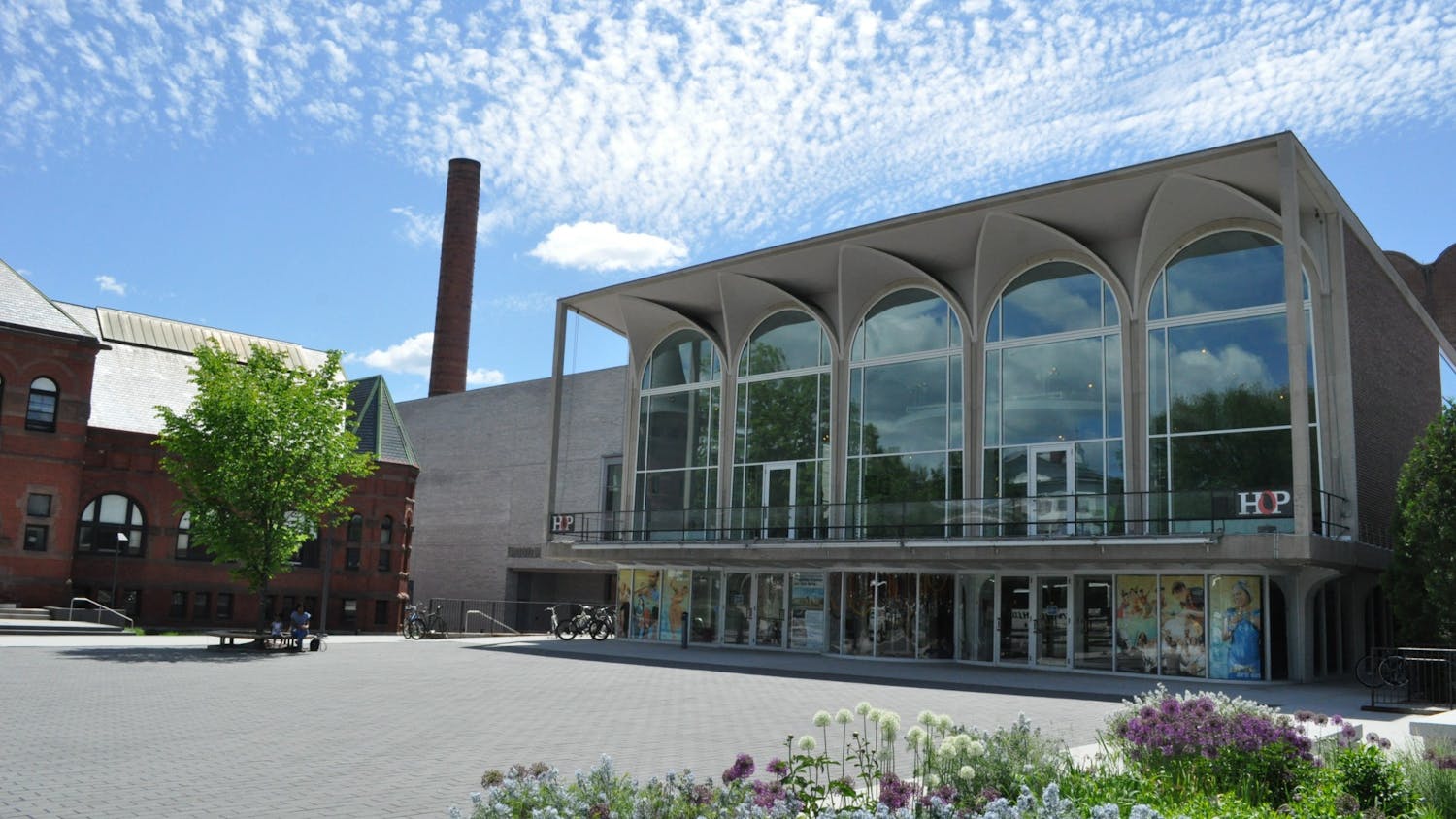Beyond catching the attention of the casual passerby, Langford '06 strives with "Living Art" to display to the average person who "doesn't know what an easel looks like" what lies within the artist's studio. Langford works in the space as part of the performance piece she has conceptualized and considers the work she produces within to be secondary to the message "Living Art" itself conveys.
It's difficult to verbalize the meaning of something that's whole purpose is visual communication, but Langford expresses her art through comparison. Just like writers "don't publish their rough drafts, but the readers know they exist," art viewers don't get to see art until the process is over, and are typically excluded from the activity of creation.
"Half the stuff artists create in a studio is just crap, and it's done for the artist to explore and get it out," she explained. When asked whether her designs covering the glass walls are meant to "decorate" the space, she insisted, "Being in here is the art piece -- not everything that's in here is art."
The senior studio art major got her idea for this latest project when she read a book about Picasso that said, "By the time he had finished one of his paintings he had already lost interest in it." Learning this made Langford want to linger more on the process of art and find out what would happen when the experience of creation was opened to the audience. She intended to let people see what she was working on, rather than creating it in isolation after the "event for the artist is over."
When she applied last spring for license to use the space, she was unsure what exactly she wanted to do, but she did know she wanted space for an extended project. "[I wanted to] see what it's like to paint in public versus private," she said. After having worked in the rotunda several weeks, she found herself making patterns of thumbprint stamps and panels of colored goldfish crackers -- mainly to cover the curved walls of the area and block out the viewers whose gaze pressures her work.
Before "Living Art," Langford experimented with painting around campus and began to see how the viewer's presence affected her process. Each time she went out to paint, she'd feel she needed to complete a painting, and she would therefore make herself focus more to get a painting done in three hours rather than to work at the relaxed pace afforded by the privacy of her own studio.
She believes this year's project, though somewhat similar in its conception, to be more open and without a set schedule. It nevertheless made her more nervous when she started out without coherence or direction. Her purpose at this point in her work is, as she said, to "organize the space and have more interaction with it."
By working "live" in the Barrows Rotunda, Langford encourages spectators to contemplate the "dichotomy between public and private," and challenge the "conception of the artist as secluded and pensive."
She invites her interviewers into the space with her, as well as her friends. Earlier this term she had a couple of her friends make out while she painted them, but wasn't pleased with the pedestrian audience's reaction.
"It turned into just performance," she said. "The fact that it was controversial turned into the art, and [I didn't want] that attention." She now admits, "I don't think I want to do performance pieces or work in public."
Working in the exposed studio she's staged in the rotunda seems to have encouraged Langford's self-criticism. She says she now feels "stuck," and "wonders whether what she's doing is just stupid or if this is a new thing." She feels she's stumbled upon the division that separates performance art from object making, but she's found the distinction between the two by "straddling" the two genres.



